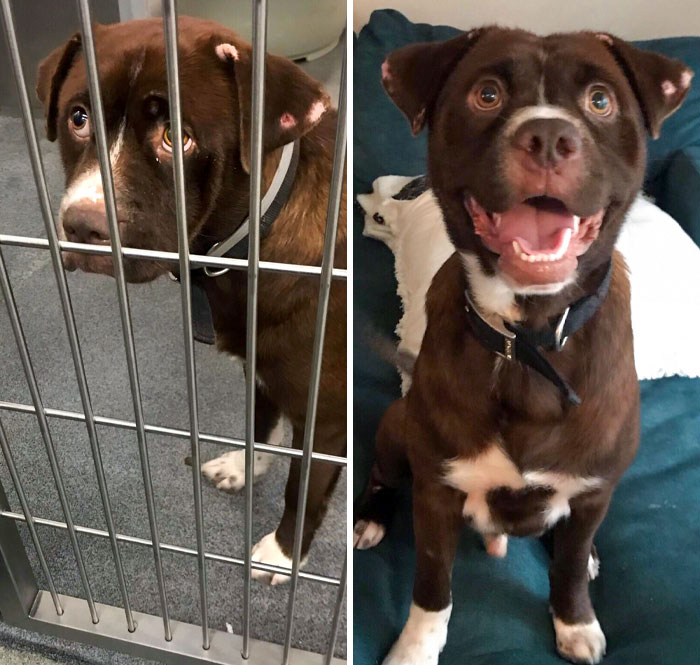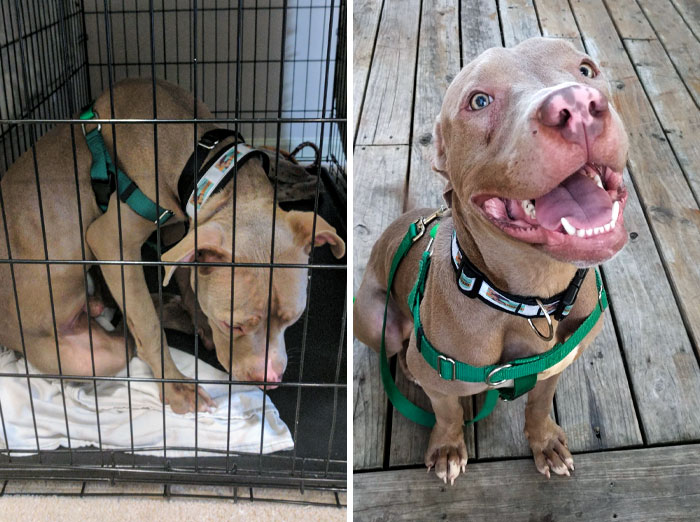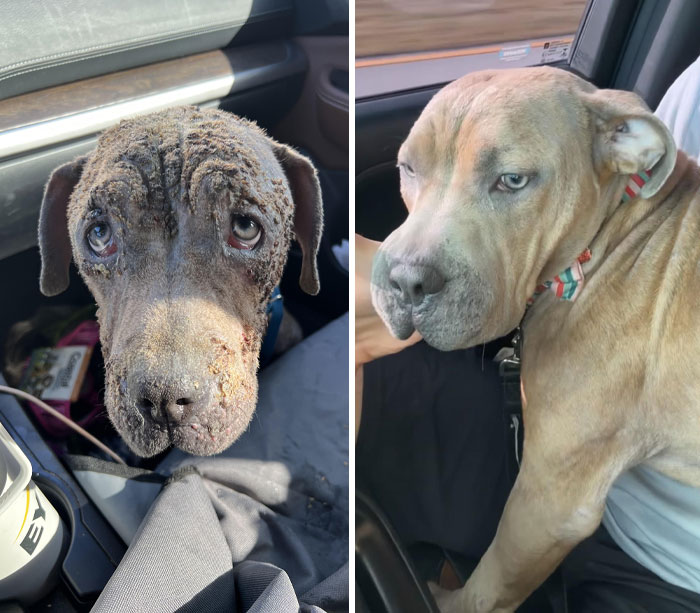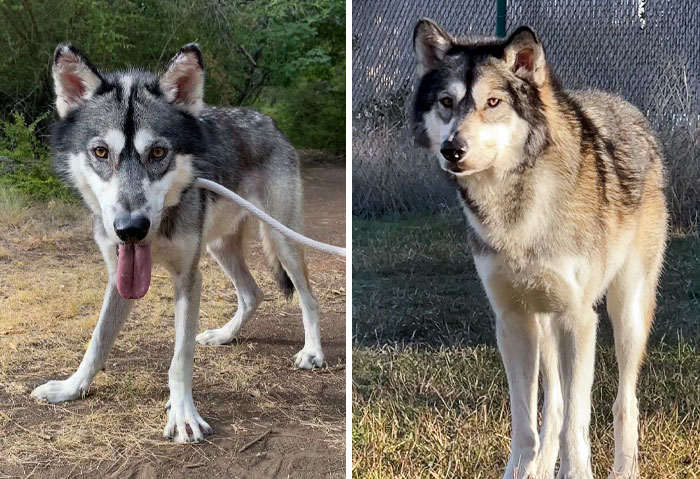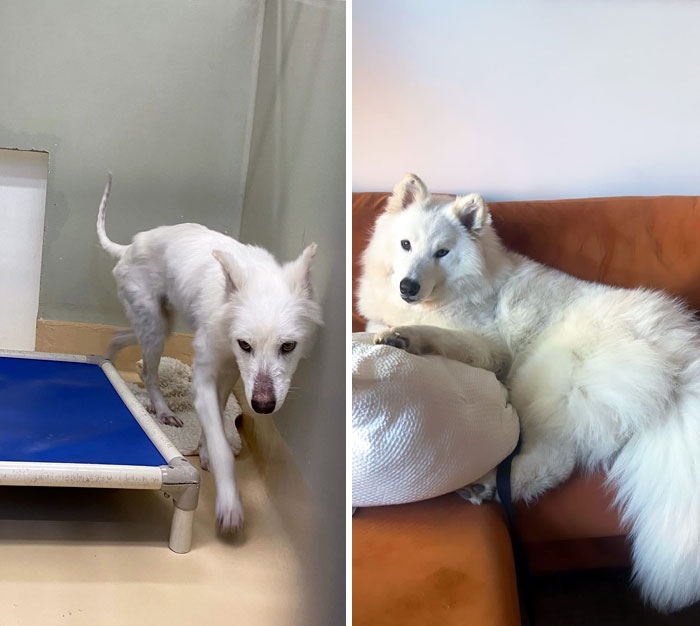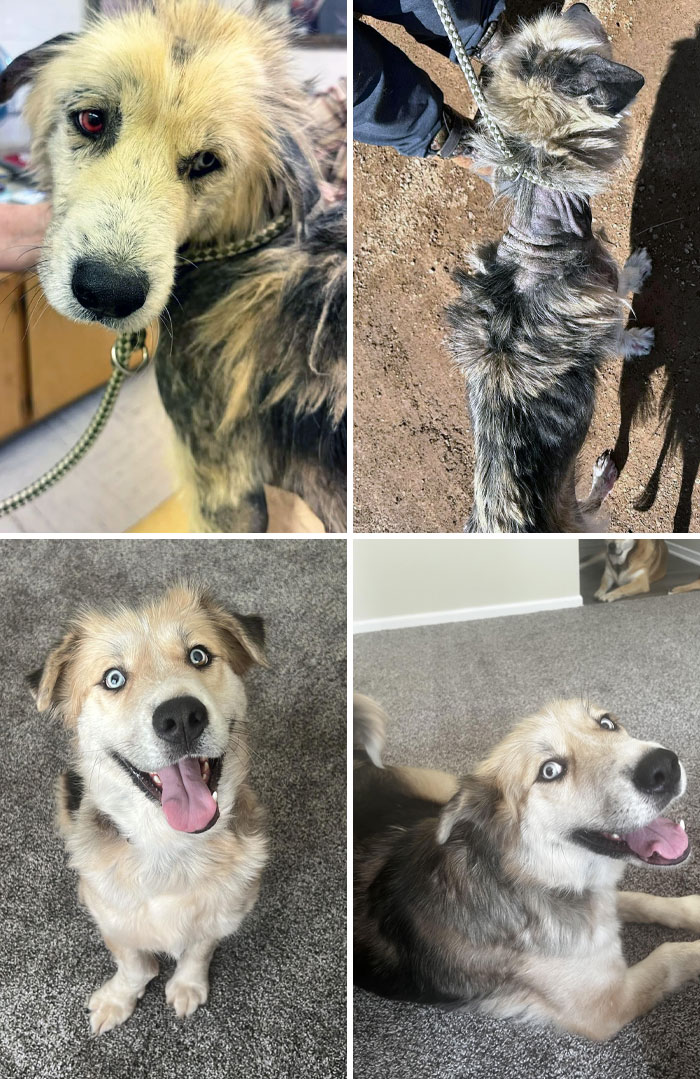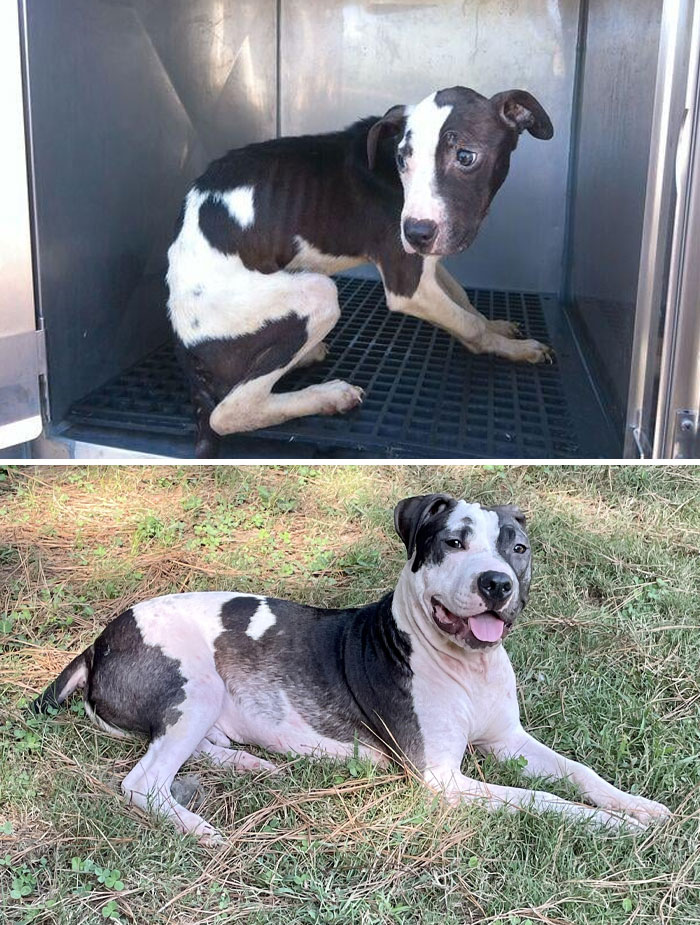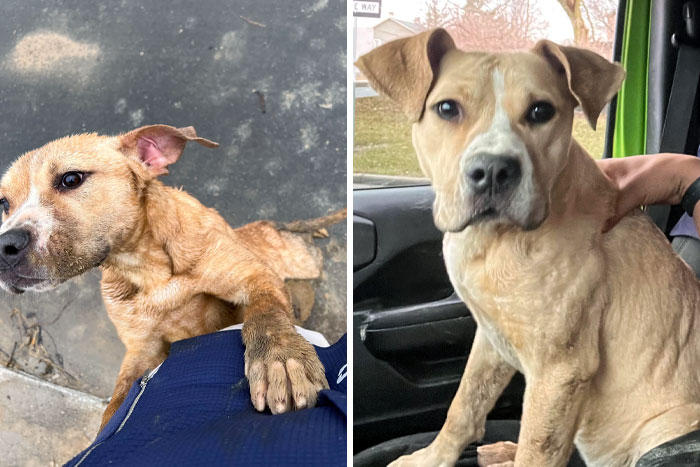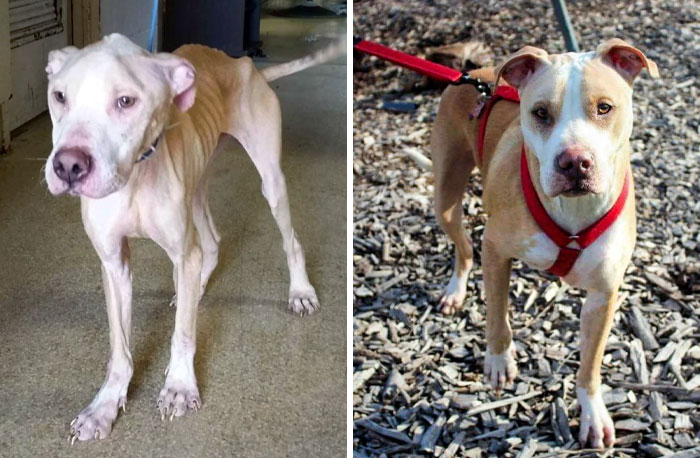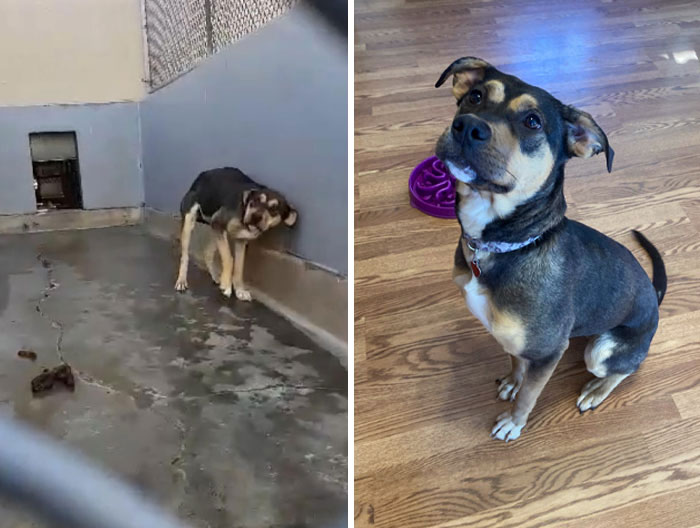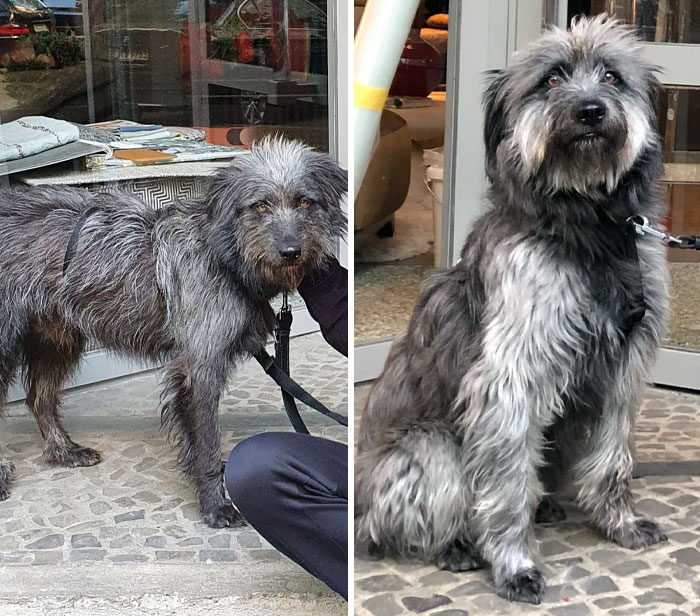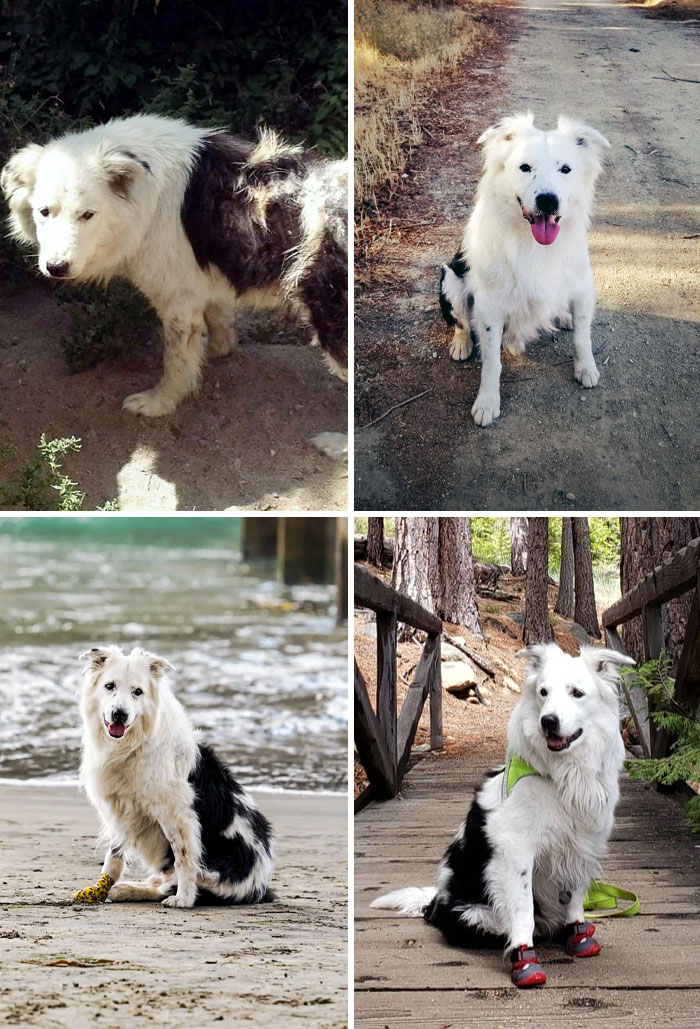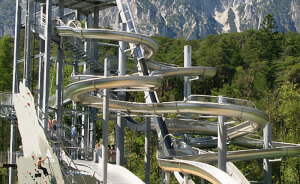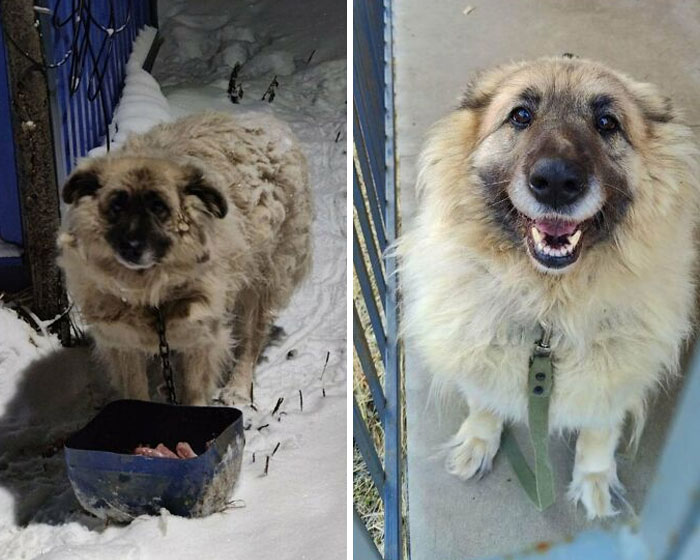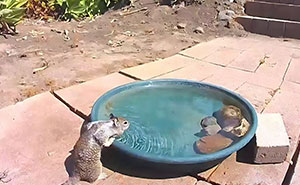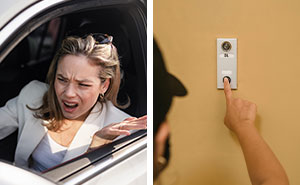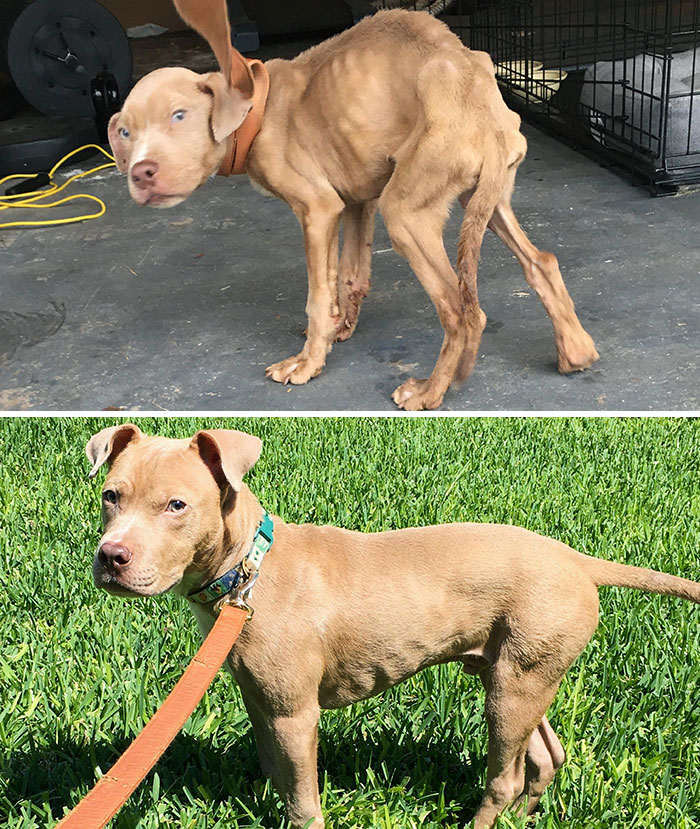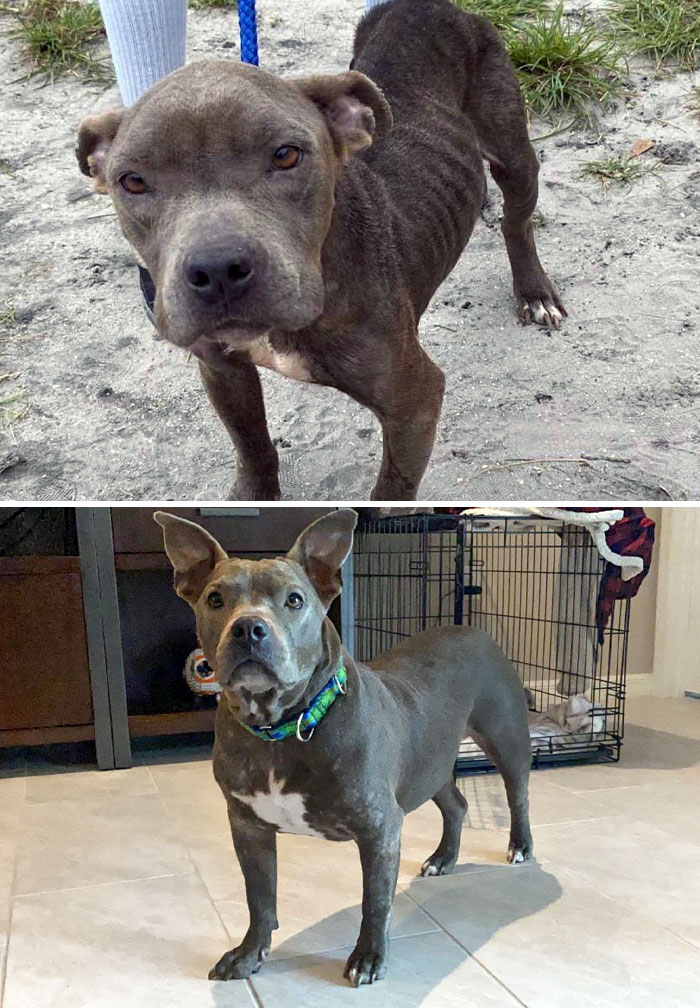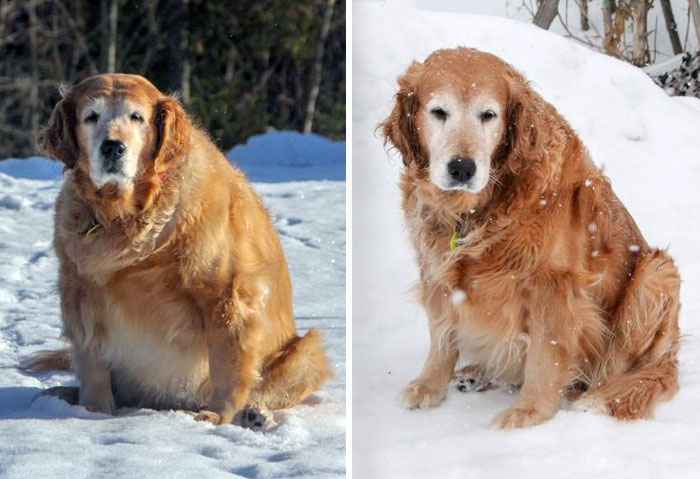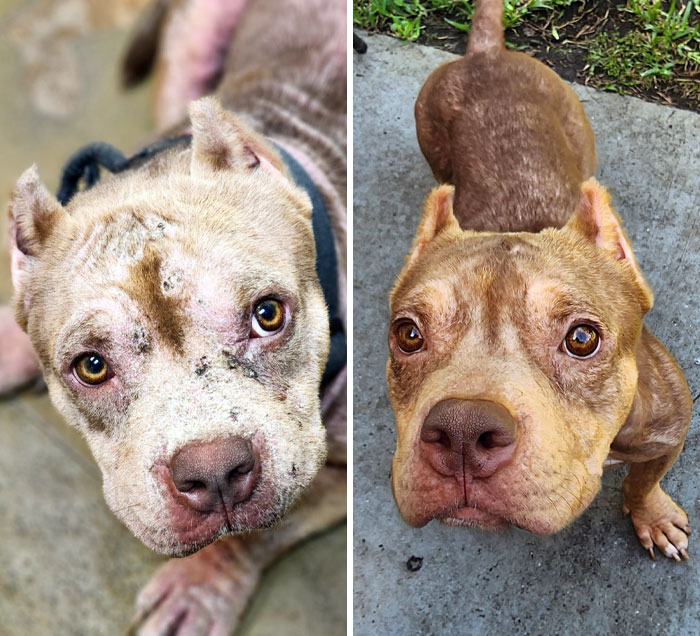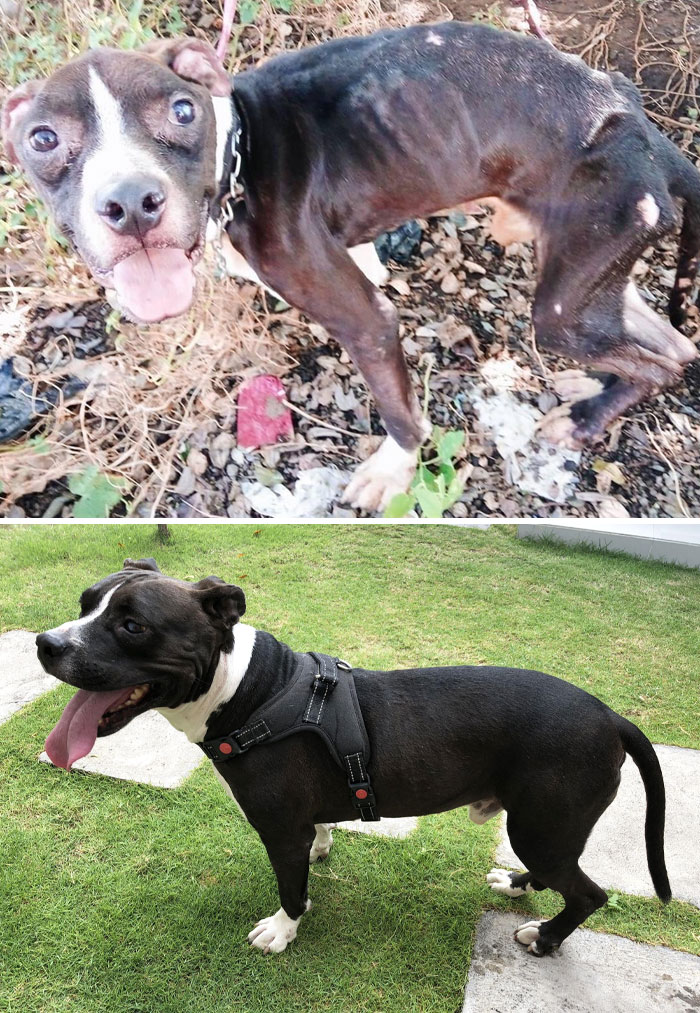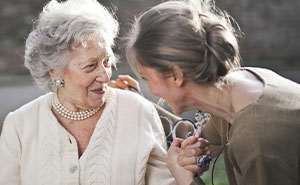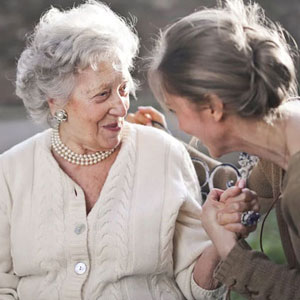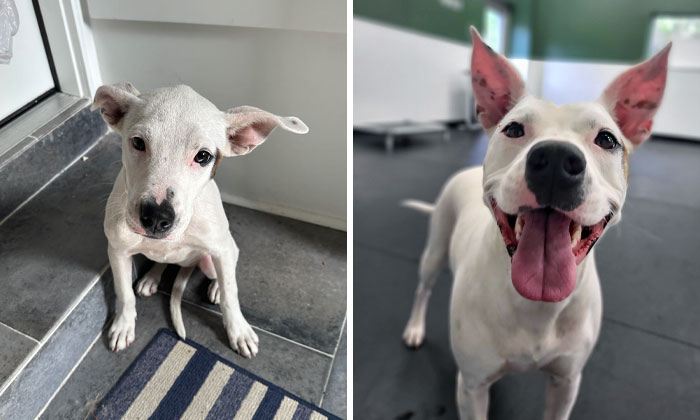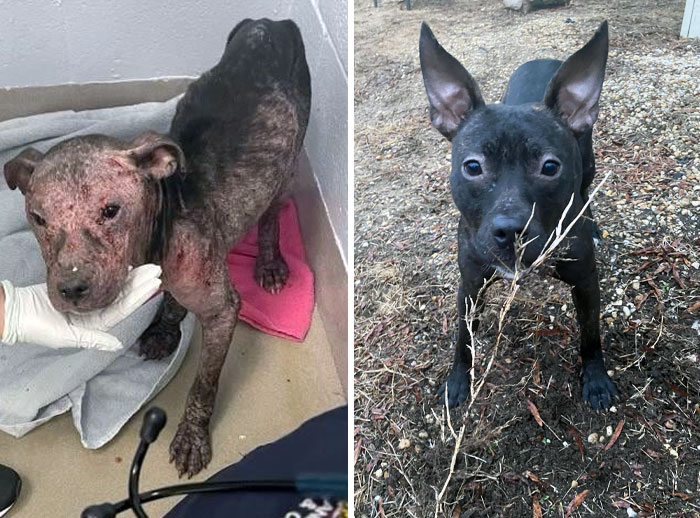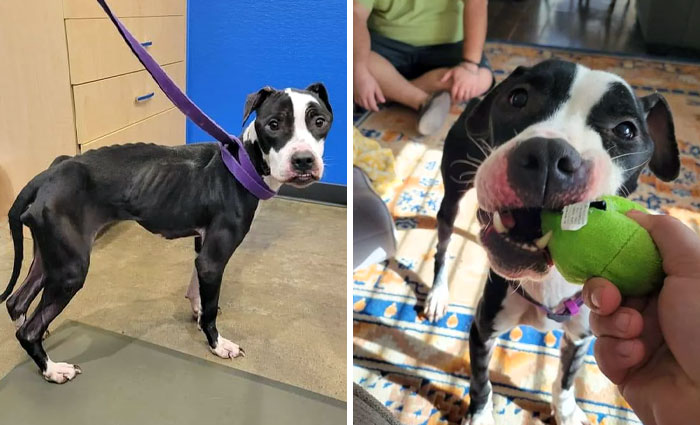The genre of before-and-after never gets old. Pictures of dogs are an immediate mood-booster. But pictures of dogs who got rescued and are now doing 100 times better are even more heartwarming. Around 3.1 million dogs get adopted every year. On the other hand, around 390,000 don’t get rehomed and are euthanized. But the puppers in these pics are not part of that statistic. They are the lucky ones. We like to melt some Pandas’ hearts from time to time, and that’s why we collected these precious rescue dog transformation pics. These dogs’ stories are a testament to what a little bit of luck, a kind human heart, and a true connection between a pet and an owner can do. To know more about the delights and challenges of adopting a rescue pet, Bored Panda reached out to Certified Dog Trainer Kristi Benson, CTC PCBC-A. She helps struggling dog owners with her online classes, including “The Calm, Cool, and Collected Dog.” We asked Kristi to weigh in on the adopt vs. shop debate, and she also spoke about the challenges that rescue dog owners might run into. Read her recommendations below! More info: Kristi Benson | Facebook | X | The Calm, Cool, and Collected Dog “Homeless dogs are, generally, homeless due to circumstances outside their control (such as the people in their lives experiencing difficulties), not because they are somehow lesser than purebred or purpose-bred dogs. Thousands of beautiful, charming, silly, robust, energic, chill, and well-mannered dogs can be found in rescues and shelters every day!” “All dogs, no matter their origin, are their own creatures with their own set of challenges and strengths,” the dog trainer points out. But not all people choose to adopt. Some folks want pure-bred dogs, and I myself will admit I used to be one of those people. When I was a kid, I wanted a pure beagle so bad I got my parents to buy me one. Back then, I didn’t know about what goes on in puppy mills, and if I had known, I certainly would’ve done a 180 in a heartbeat. “A great dog breeder will focus on the physical and behavioral health of their pups and will be committed to finding homes that are a good match for the dogs they sell,” she explains. “However, the vast majority of puppies who are sold to the unsuspecting public are not from great breeders – they are from puppy mills.” “Puppy mills are horrific and dangerous for the parent dogs,” dog trainer Kristi Benson goes on, “who live in absolutely abhorrent conditions, and the puppies, who don’t experience the quality socialization they need and may suffer medically and behaviourally, along with their new human family, as they grow.” “A good search on figuring out if a puppy-selling website is a front for a puppy mill should be the first step for those who choose to buy a purebred or purpose-bred dog, unless they know the breeder personally,” the dog trainer adds. “Read good puppy books written by qualified positive reinforcement trainers, which focus on socialization instead of punishment and obedience,” Kristi recommends. “If at all possible, choose a puppy class with lots of free play and socializing.” What if you’re bringing home an adult dog and not a puppy? “[This] may include some challenges, but these will be dog-specific and not necessarily origin-specific,” Benson says. “If the dog is in need of a bit of remedial manners training, a great dog training class will be a good option. If the dog might have some fears, then a good positive reinforcement trainer can help.” But just because a dog comes from a shelter or rescue doesn’t mean owners will face challenges. “They need care, exercise, good food, vet care, enrichment, and all the things that we love providing for our dogs! But these are things that we must provide to all the pets in our care,” Kristi points out. “This is especially the case with puppies, who benefit enormously from the safe environment of a well-handled puppy class to play with other puppies and learn important life skills, such as how to be comfortable at the veterinary office and have their nails trimmed.” “So, do some digging around before you slap your credit card down and sign up for the closest class. If there are no good trainers close by, there are oodles of great online classes for everything from basic manners to specialized training and even [how] to deal with behavior issues.” “We can help you meet your dog’s needs, meet your needs, and keep everyone feeling safe and joyful. If hard decisions, such as a return to a rescue, need to be made, a trainer can also help clarify and talk you through this.” “So, looking at dogs who are at least three years old at the rescue or shelter is a good bet, especially if the dog was in a foster home. You’ll have a sense of what the dog is like and how they’ll fit into your home and your life!” “Some use outdated and dangerous training techniques to mask worrisome behaviors in the dogs in their care, and some may not vet well for health and offer little or no support post-adoption. Many rescues are wonderful, though, and take great care of the animals they place with adoptive homes.” The dog trainer also tells people to consider adopting a senior dog. “These dogs are often less active, which means they fit in nicely with a more casual home (I don’t get up at six to jog for an hour, do you?). And nothing will fill up your heart quite like being a soft and gentle spot for a homeless senior dog to land after a stretch in a rescue or shelter.” Follow Bored Panda on Google News! Follow us on Flipboard.com/@boredpanda! Please use high-res photos without watermarks Ooops! Your image is too large, maximum file size is 8 MB.












